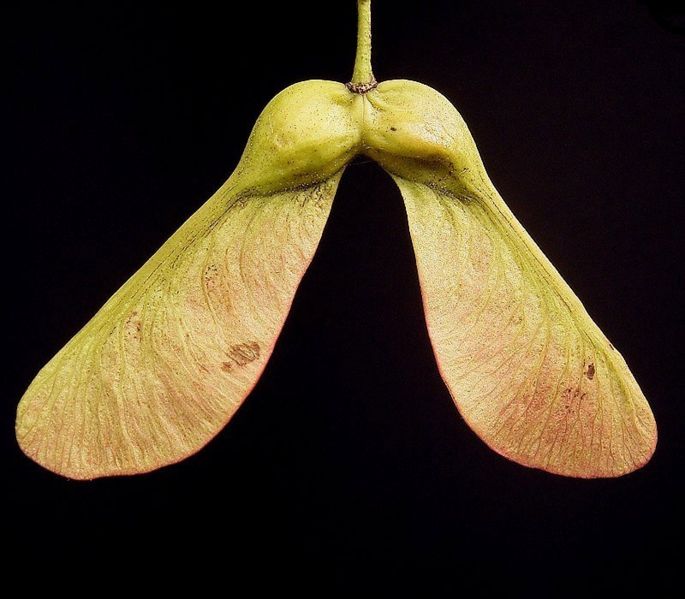Scientists have discovered the trick that keeps certain trees' seeds aloft - and it turns out they use the same strategy as insects.
 Writing in this week's Science, Harvard researcher David Lentink and Caltech scientist Michael Dickinson explain how they have cracked the puzzle of how the mini 'helicopter' shaped seeds of maples and hornbeams manage to fly so well.
Writing in this week's Science, Harvard researcher David Lentink and Caltech scientist Michael Dickinson explain how they have cracked the puzzle of how the mini 'helicopter' shaped seeds of maples and hornbeams manage to fly so well.
"We immersed in oil a robot fly designed to mimic the seeds' wing shape and programmed it to turn in a circular fashion resembling the seeds as they fall," explains Michael Dickinson. "By illuminating a slice at a time of the oil with a laser beam we could see how the fluid was flowing around the wings."
What the team saw was a phenomenon called a leading edge vortex - LEV - which is like a miniature tornado turned on its side and sitting against the wing. "These vortices create enormous lift, which is what keeps the seeds up for much longer as they fall," Dickinson explains.
To prove that real seeds do what the robot model predicts they should, Lentink came up with a way to film the seeds 'falling' in a wind tunnel. The vortices were clearly visible and, intriguingly, they match the exact same mechanism that keeps insects aloft.According to Dickinson, "the falling seeds, as well as insects (which engineers say shouldn't be able to fly!), have their wings arranged with a very high angle of attack, which is what makes these vortices. Insects twirl their wings like a figure of eight in flight, these seeds spin."
The result is an incredible example of convergent evolution - how two totally different organisms have hit upon the same solution to a problem - but can it inform future flight? "We think it might help us to solve some problems regarding how to build better turbine blades in future," says Dickinson.










Comments
Add a comment